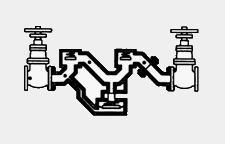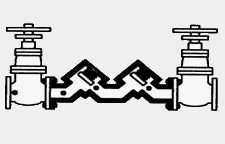Installation
It is important that the backflow prevention assembly match the location’s particular hydraulic conditions and is suitable to protect against the degree of hazard present. Any BPA installed must be a design approved and listed by University of Southern California Foundation for Cross Connection Control and Hydraulic Research (see our Approved Backflow Prevention Assemblies List). Also, the BPA must be installed according to the most recent plumbing code adopted by the City of Austin.
Testing and Maintenance
Once installed, these BPAs are subject to initial and periodic testing and maintenance requirements to confirm their continued operational effectiveness. Such testing must be performed by a state licensed Backflow Prevention Assembly Tester registered with the City of Austin. Licensing, registration and other tester-specific information is also available online (see Backflow Prevention Assembly Tester Information).





